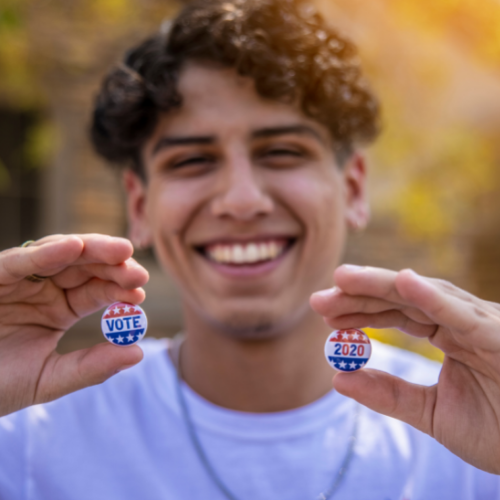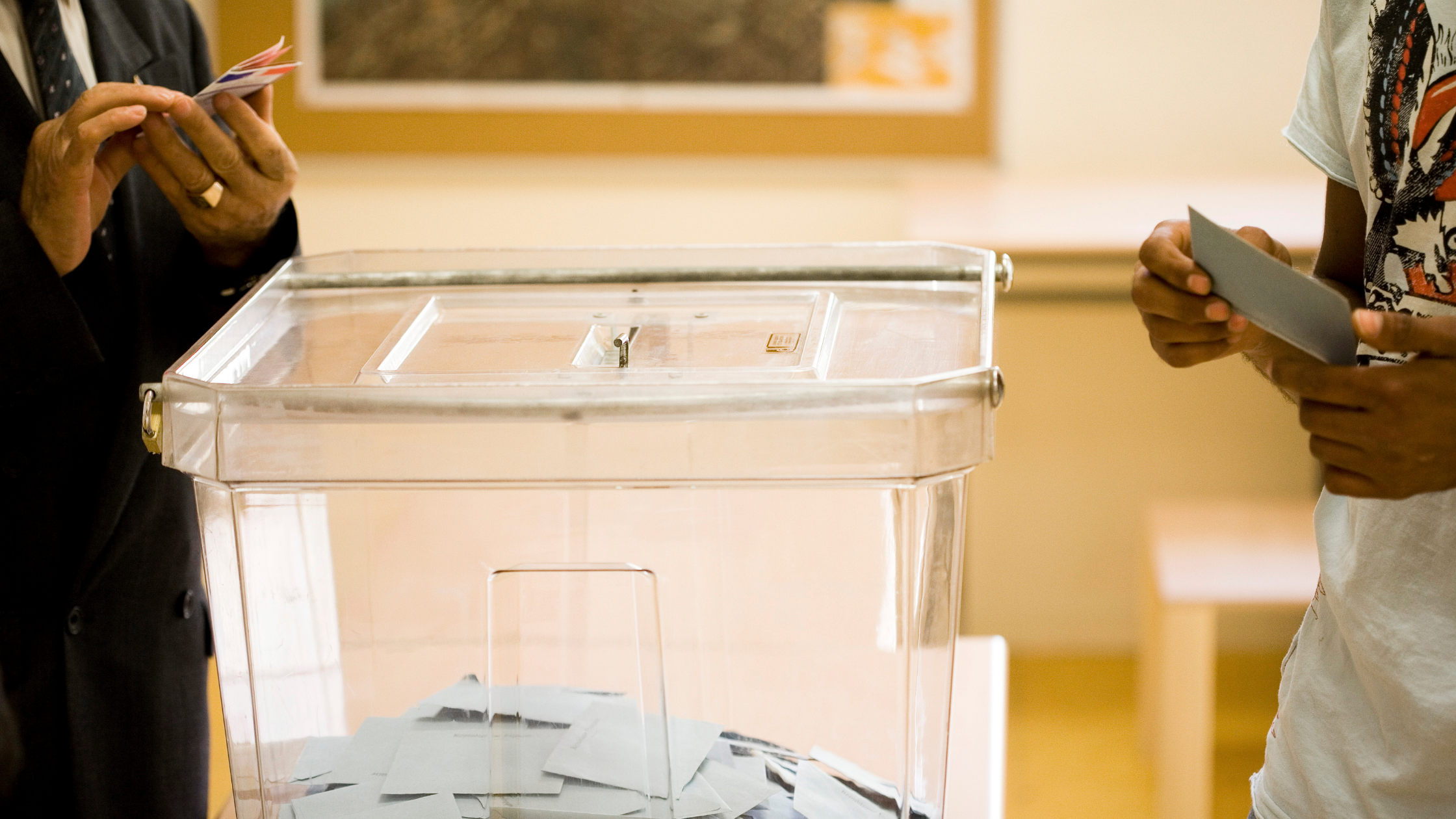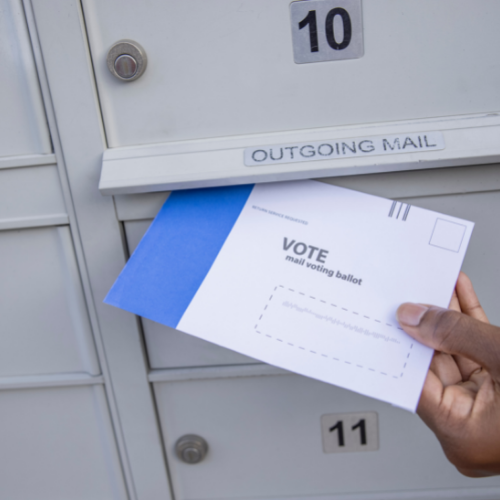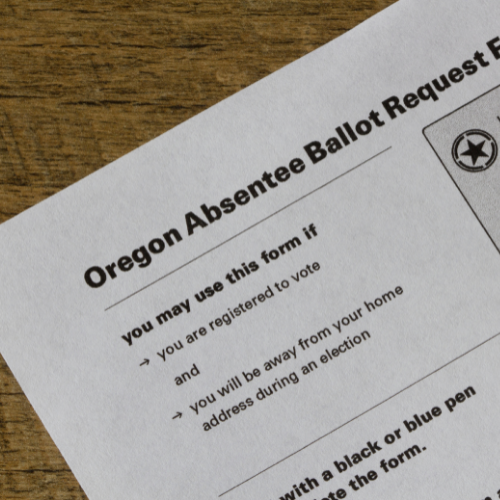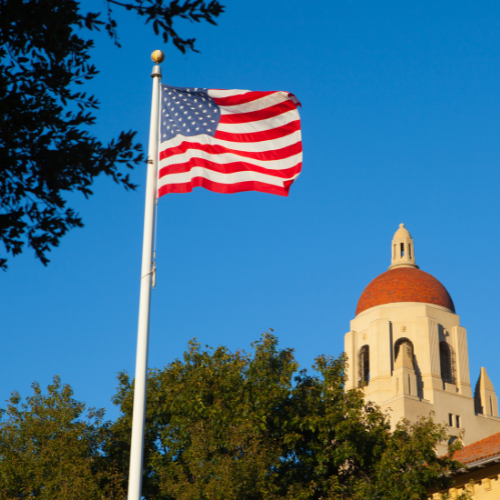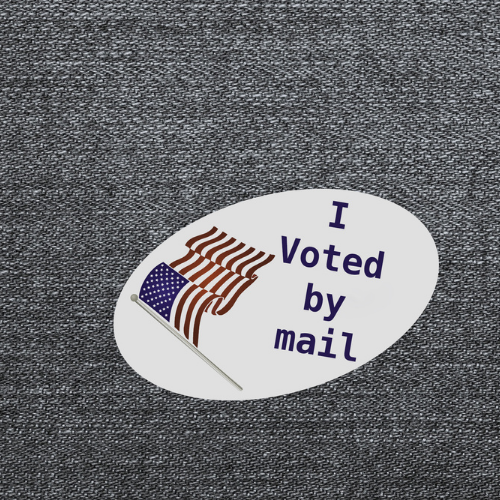Policy-makers disagree on the merits of mandatory vote-by-mail. Many of these debates hinge on whether mandatory vote-by-mail advantages one political party over the other. Using a unique pairing of historical county-level data that covers the past three decades and more than 40 million voting records from the two states that have conducted a staggered rollout of mandatory vote-by-mail (Washington and Utah), researchers used several methods for causal inference to show that mandatory vote-by-mail slightly increases voter turnout but has no effect on election outcomes at various levels of government. Their results find meaning given contemporary debates about the merits of mandatory vote-by-mail. Mandatory vote-by-mail ensures that citizens are given a safe means of casting their ballot while simultaneously not advantaging one political party over the other.
Participatory and Partisan Impacts of Mandatory Vote at Home
This research explores the effect of vote-by-mail on electoral outcomes by using historical nationwide county-level data between 1992-2018 as well as 40 million individual-level voter records from Washington and Utah – both full vote-at-home states. The research finds a positive effect on turnout, with no discernable partisan advantage.
Safeguards for Equity in the Vote at Home Model
The following report outlines the most current research on the inclusion of these populations in existing VAH systems, as well as the elements in those systems that must be maintained in any new implementation models in order to increase that inclusion. As more states adopt these measures, we will continue to evaluate their impact on voters to close access gaps as much as possible.
Universal Vote-By-Mail Has No Impact on Partisan Turnout or Vote Share
From the authors: “In response to COVID-19, many scholars and policymakers are urging the United States to expand voting-by-mail programs to safeguard the electoral process, but there are concerns that such a policy could favor one party over the other. We estimate the effects of universal vote-by-mail, a policy under which every voter is mailed a ballot in advance of the election, on partisan election outcomes. We find that universal vote-by-mail does not affect either party’s share of turnout or either party’s vote share. These conclusions support the conventional wisdom of election administration experts and contradict many popular claims in the media. Our results imply that the partisan outcomes of vote-by-mail elections closely resemble in-person elections, at least in normal times.”
Age Discrimination In Voting At Home
In several states, the opportunity to vote from home is reserved for only a subset a voters — most often seniors and the physically disabled. However, these laws that discriminate on the basis of age may be in violation of the Twenty-Sixth Amendment.
State Voting Policy Changes to Deal with COVID-19
As a result of the COVID-19 pandemic, many states implemented temporary policies to expand access to mailed-out ballots in an effort to provide safe voting options. National Vote at Home Institute compiled a list of these changes, effective May 2020.
All-Mail Voting in Colorado Increases Turnout and Reduces Turnout Inequality
The COVID-19 crisis has sparked interest in all-mail voting as a potential policy solution for avoiding in-person elections. However, past research into the effect of all-mail voting on voter turnout has found mixed results. We exploit the implementation of all-mail voting in Colorado, where statewide policy implementation was effective but turnout has been understudied, to estimate the effect of all-mail voting on turnout for all registered voters, along with age, racial, education, income, and occupational subgroups. Using large voter file data and a difference-in-differences design within individuals, we find an overall turnout effect of approximately 9.4 percentage points. Turnout effects are significantly larger among lower-propensity voting groups, such as young people, blue-collar workers, voters with less educational attainment, and voters of color. The results suggest that researchers and policymakers should look to Colorado’s all-mail voting approach as an effective model for boosting aggregate turnout and reducing disparities across subgroups.
Single Sign-up Efficiency Improvement Opportunity for Voters and Elections Officials
The National Vote at Home Institute conducted original research in the Fall of 2019 to see how many absentee voters from 2018 also voted that way in 2016, and therefore would have benefitted from a permanent absentee policy in their state, while in turn the elections officials in that state would not have had to process those applications a second time.
In the 40 states listed on page 2, citizens may or may not have to provide an excuse to sign up for a vote at home ballot, yet all are required to submit the same request, election after election, or year after year. And election officials have to process these requests again and again, often from the same voters. In the other 10 states, citizens can either choose to be on a “true” permanent absentee list, or they all get their ballots delivered automatically by state policy, saving voters time and hassle.
Signature Verification and Mail Ballots: Guarantee Access and Preserve Integrity
When voters cast ballots by mail, election officials need a method to verify their identity to ensure the integrity of the election. In many states, including California, county officials use signature verification, a process by which election officials compare the signature on a vote-by-mail (VBM) ballot return ID envelope to the signatures in a voter’s registration file. If the signatures are sufficiently similar, the ballot is accepted and counted—if not, it is set aside for election officials to review further and attempt to verify the voter’s identity.
California has been a leader among states in expanding options and facilitating vote-by-mail. With statewide implementation of the Voter’s Choice Act (SB 450) slated for 2022, all California voters will be given the option to vote at home and send their ballot in by mail. Increased adoption of this practice has brought state and national attention to all aspects of the vote-by-mail process, including signature verification. Small variations in these practices can decide close races.
The purpose of this study is to understand how California counties manage two related electoral processes: (1) verifying signatures on vote-by-mail ballot return ID envelopes and (2) notifying voters whose signatures were rejected and providing a process to allow voters to remedy this rejection. The latter process encompasses requirements mandated by recent California legislation entitled the Every Vote Counts Act (EVCA), SB 759.
We hope making this information accessible to election officials and the general public will raise awareness of how vote-by-mail ballots are processed in California. We also hope that, as a result, policymakers in California and elsewhere will gain a better understanding of how counties are performing these key electoral functions. Based on this study’s findings, we provide a set of recommendations directed to county election officials, the California Secretary of State’s Office, and to voters themselves to improve these processes and to ensure that, indeed, every vote is counted.
This report is the product of both quantitative analysis and qualitative interviews. To assess the effects of different signature verification processes on vote-by-mail rejection rates, we gathered and analyzed historical voting data for all California counties from 2004 through 2018 from the Election Administration and Voter Survey (EAVS). The bulk of our study, however, grows out of interviews with several national election administration experts and with election officials from thirty-three of California’s fifty-eight counties. While county procedures are identified, quotes are not attributed to individual county officials to preserve confidentiality. Together, the 33 California counties we surveyed represent over 32 million people—more than 80% of the state’s population.
Vote at Home: What is it? Best Practices and Lessons learned
This purpose of this document is to give citizens, civic organizations, policy advocates, and local, state, federal, and tribal government officials (including election administrators) important facts and background about what we refer to as “Vote at Home – VAH” election systems (also often called “All Vote by Mail” elections).




